TEXAS HISTORICAL COMMISSION AWARD OF EXCELLENCE IN PRESERVING HISTORY, 2021
AMERICAN ASSOC. FOR STATE AND LOCAL HISTORY AWARD OF EXCELLENCE, 2021
Learn more about Bob and Almeady Chisum Jones on this website under History of Southlake/Bob Jones and History of Southlake/People.
WHO WAS BOB JONES?
His name is on Southlake’s largest park, a road, and the city’s nature center and preserve. So who was he?
Born into slavery, Bob and his wife, Almeady Chisum Jones, overcame the challenges of a mixed-race heritage with integrity and hard work, earning the respect of all who knew them. Newly uncovered documents, pictures and family heirlooms give fresh insight into their story.
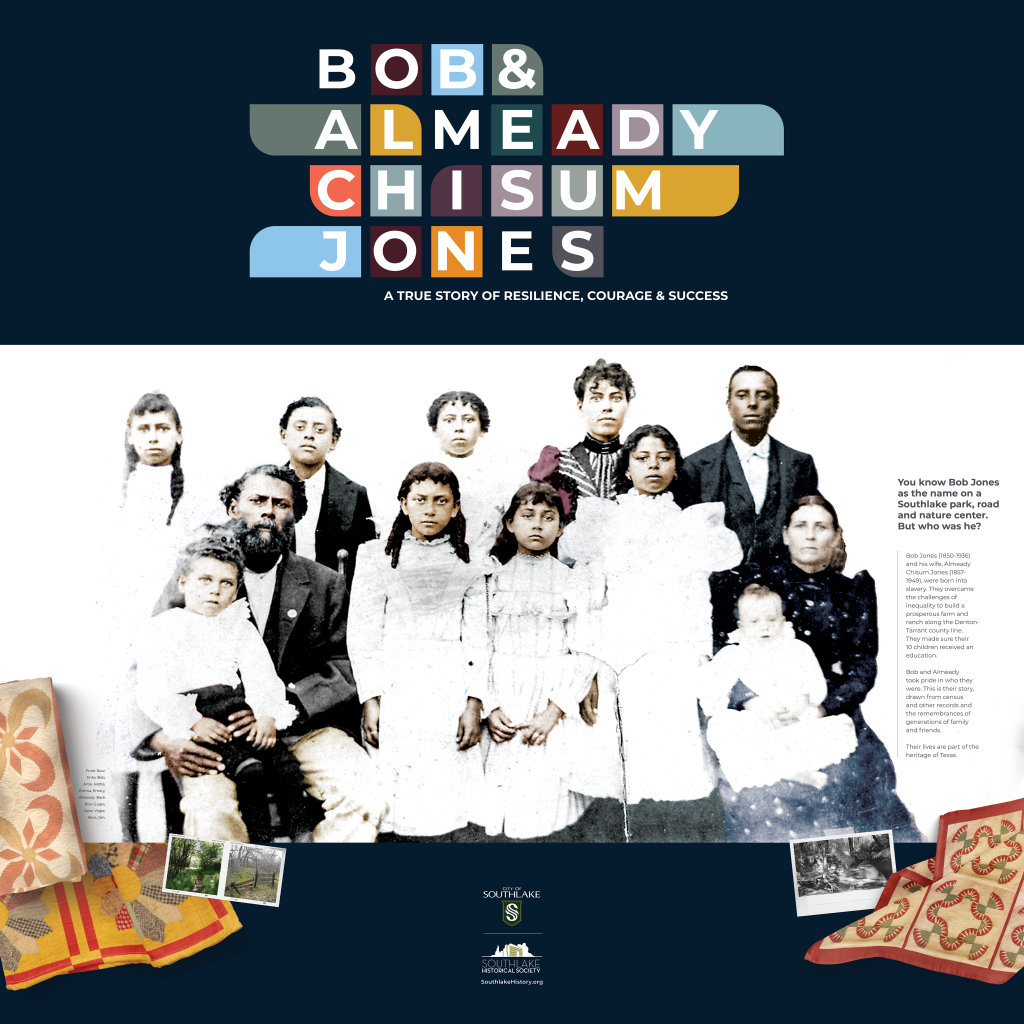
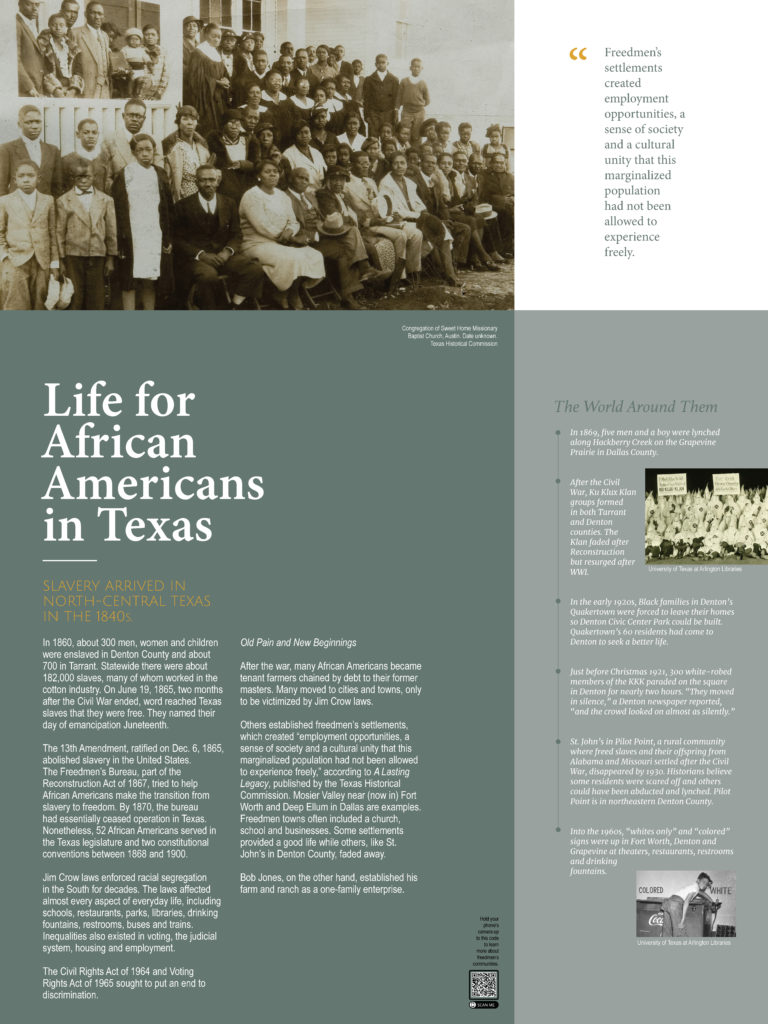
To learn more about freedmen’s communities, click here.

To learn more about researching slave ancestors, click here.
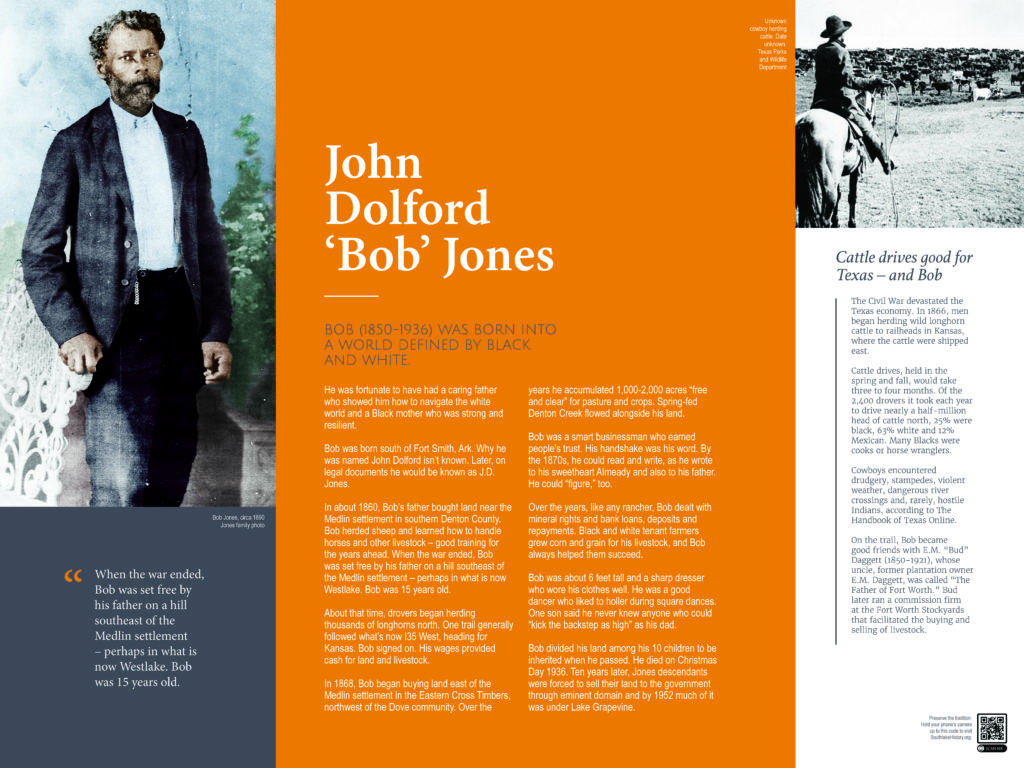

To discover how Larry McMurtry came to name his book Lonesome Dove, click here.
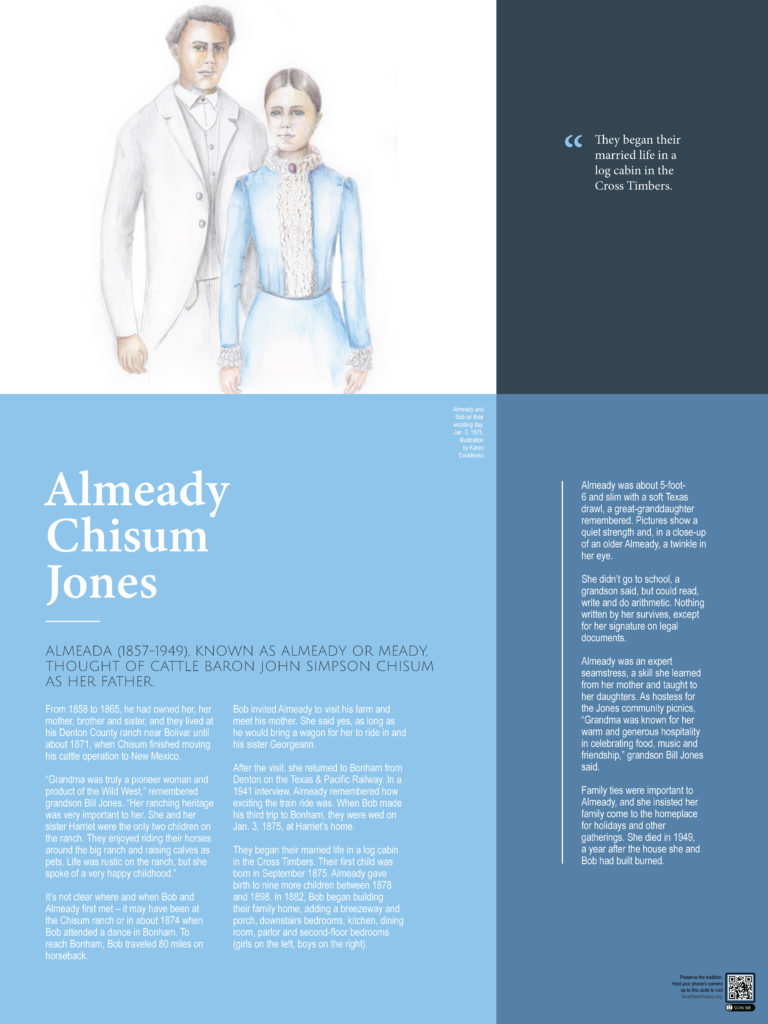
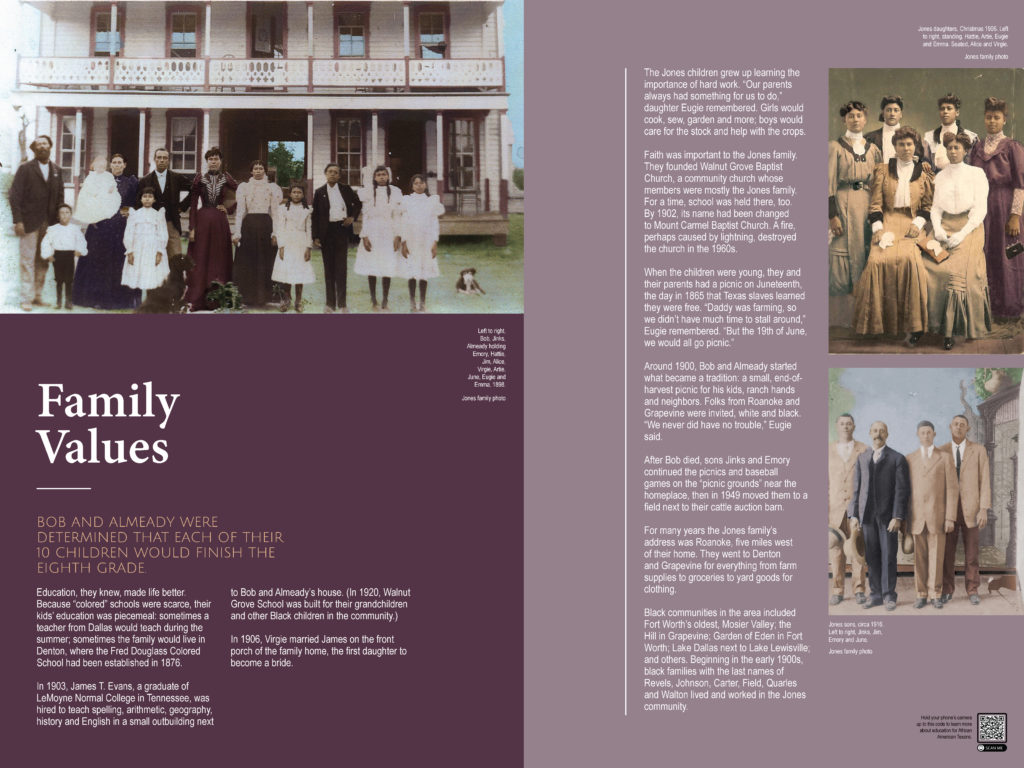
To learn more about education for African American Texans, click here.
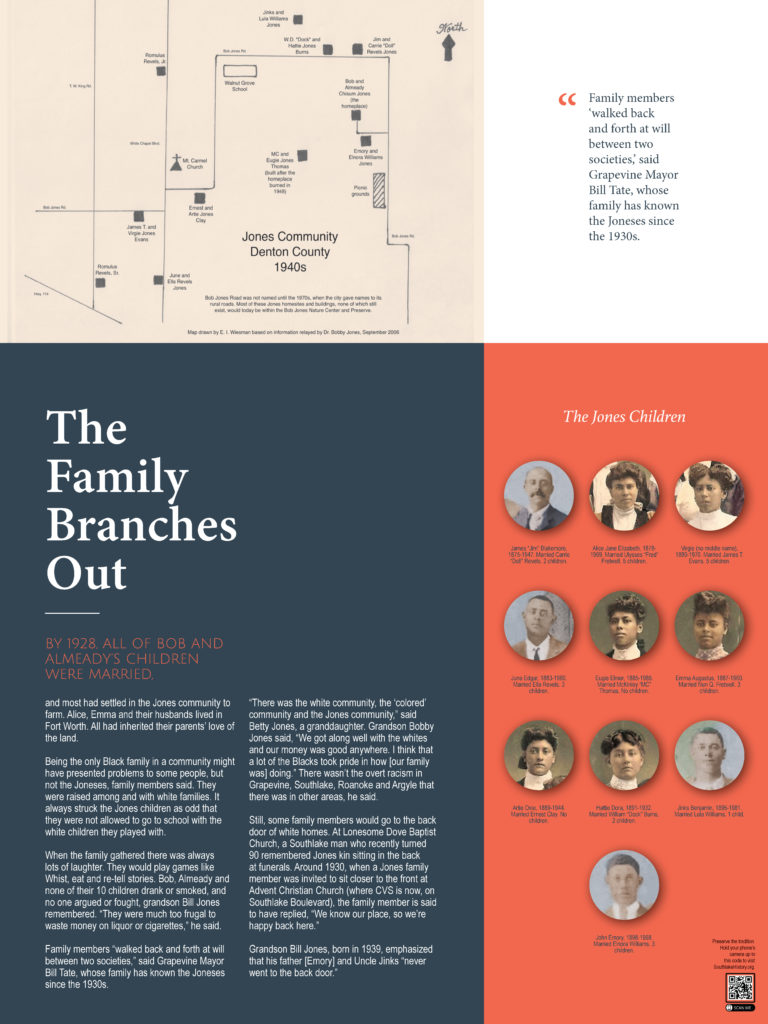


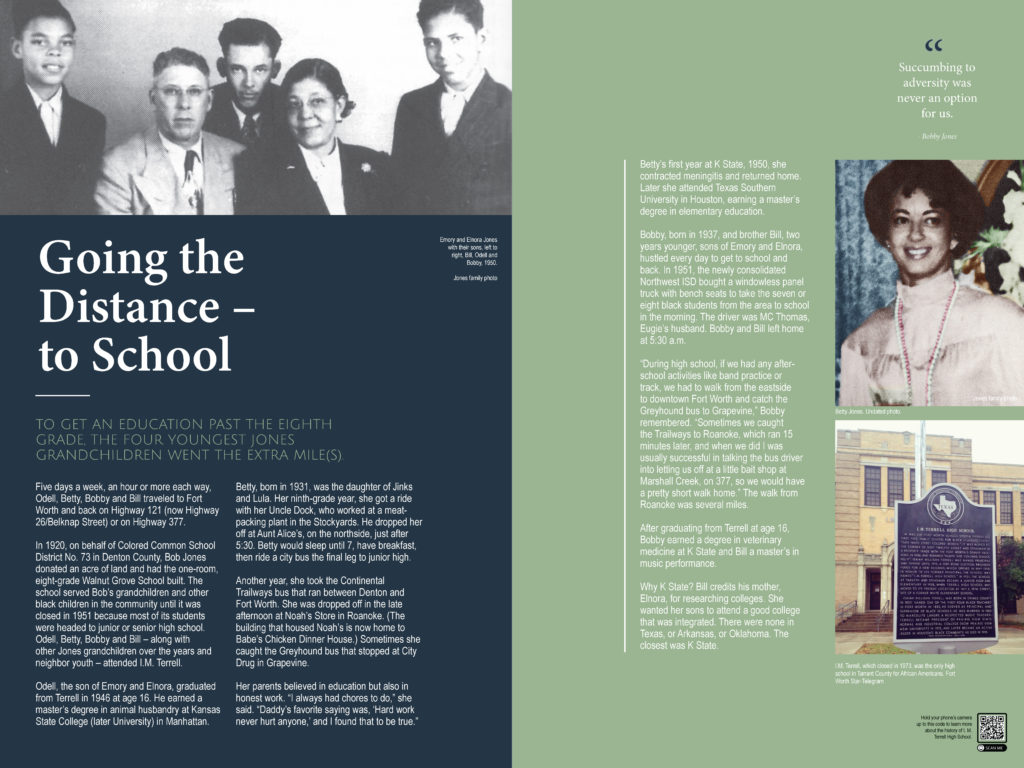
To learn more about the history of I. M. Terrell High School, click here.

To take a look at several cattle auctions, click here. Note the skill of the 18-year-old auctioneer.

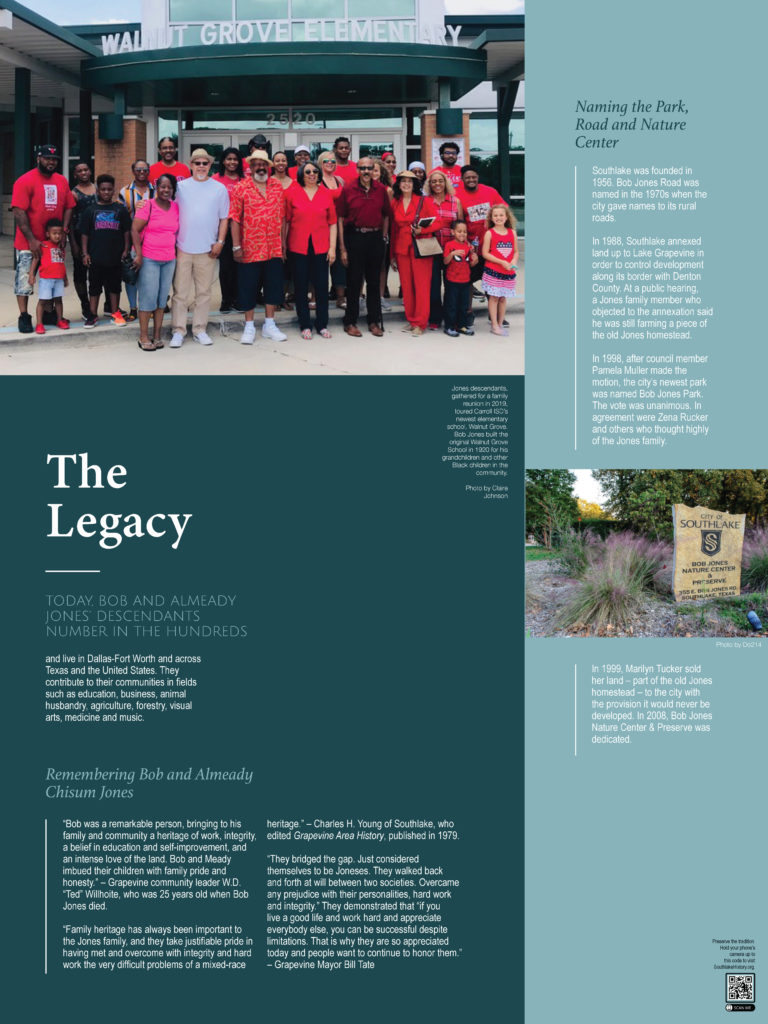
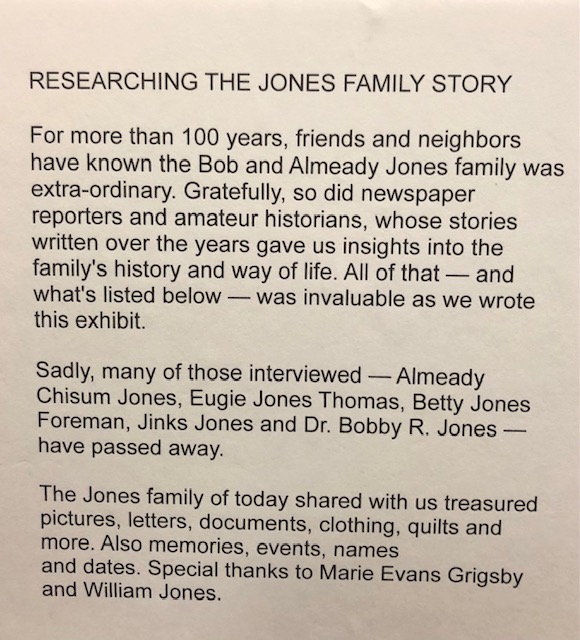





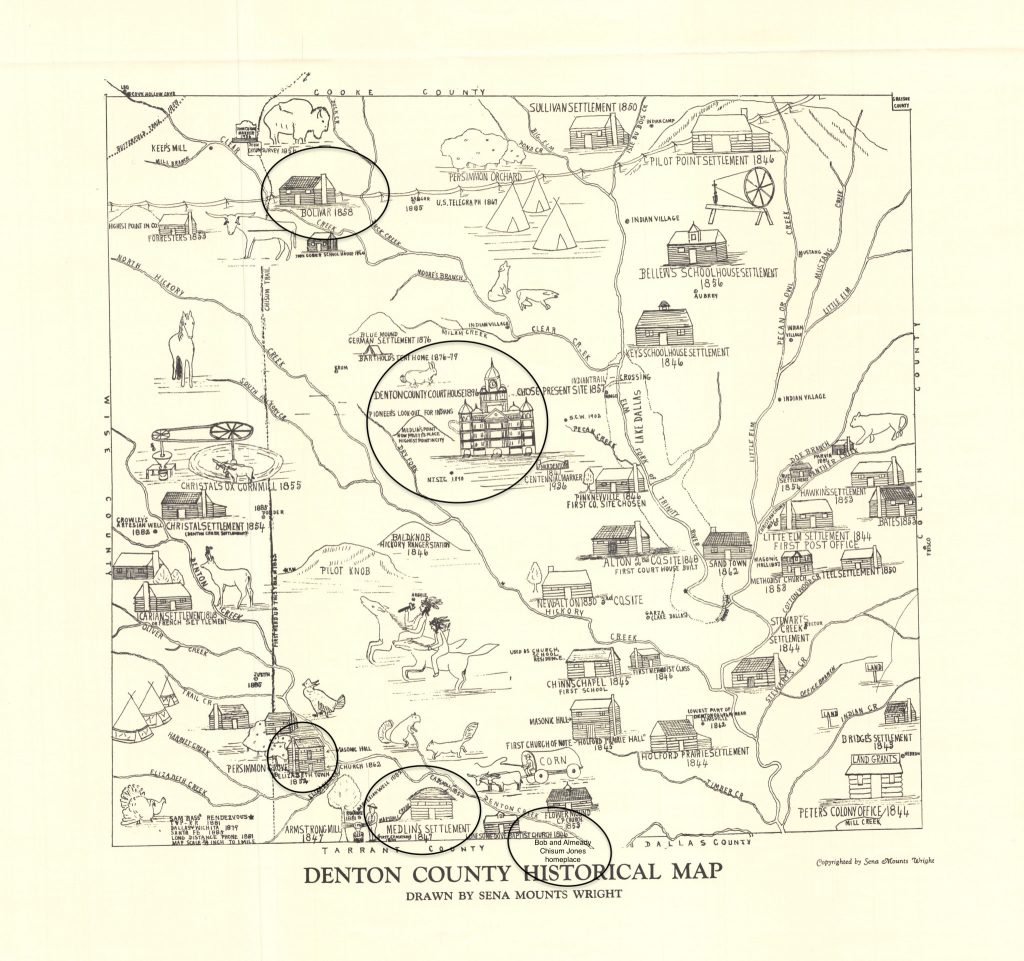
This map of Denton County, based on an early county survey, was drawn in 1936 by Sena Mounts Wright for the Texas Centennial. The circles were added by the Southlake Historical Society to spotlight places important to the Jones family: the Elizabethtown/Medlin area where Leazer brought Elizabeth and their children from Arkansas; Bolivar, near John Chisum’s ranch; Bob and Almeady’s homeplace in the southern portion of Denton County; and Denton, where the family sometimes lived so their children could attend school in the Quakertown neighborhood. Not circled is Pilot Point in northeastern Denton County, a rural community where freed slaves and their descendants lived after the war. James and Virgie Jones Evans, married in 1906, moved there so he could teach. Historians recount that many people were scared off; within a few years, James, Virgie and their baby daughter were back in the Jones community.

Bob’s younger sister Ellen married Plez (Pleasant) McConnell in 1874 in Denton. Here, members of the extended Jones family gather in Oklahoma at the McConnell home circa 1920. Standing second from the left is Elnora Williams, who in 1928 would marry Emory, seated third from the left. Standing third from the left is Jones daughter Artie (she and her future husband, Ernest Clay, would be important in the creation of the Bob Jones Nature Center). Plez and Ellen are seated third and fourth from the right, and Almeady is seated fifth from the right.

Into the 1960s, the Texas Joneses and the Arkansas Joneses (Leazer’s two families) kept in touch. Two people in this 1940s photograph are Bob’s half-siblings: Roxie, third from the left, and Jink, fifth from the left. Jink, also known as Captain Jink, was named for a song popular post-Civil War, Captain Jinks of the Horse Marines. For some reason, the “s” was left off his name. In 2020, the wife of Jink’s grandson helped us with research on Leazer.
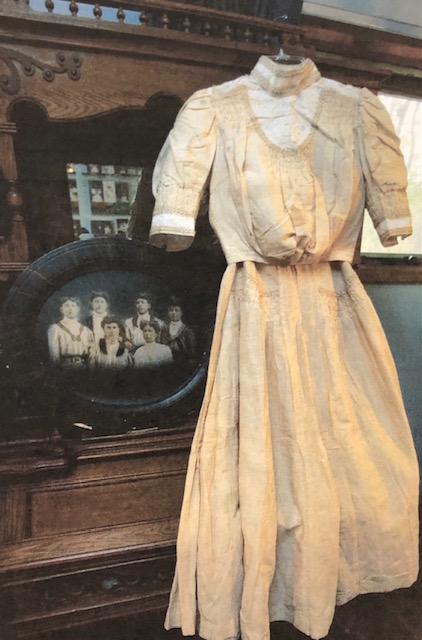
Virgie, who married James Evans in 1906 on the front porch of the family home, was the first daughter to become a bride. Over the next 20 years, each of her five sisters would marry on the same spot on the front porch. “All the girls made their husbands [to be] ask Daddy,” sister Eugie recalled. “His response was always the same: ‘Now, if you take them away, I don’t want you to mistreat them, and if you can’t make a living for them, then you bring them back home.’ Wasn’t any of them that ever had to come back home.”
Eugie made a veil that they all wore. Unfortunately, it was lost in the 1948 fire that burned the home Bob and Almeady had built.
Bob and Almeady purchased the organ from a cross-country peddler, according to family members who remember the organ in their parlor. Today, it sits the home of Marie Evans Grigsby, granddaughter of Virgie and James.

In 2010 Anita Witt, who owned the former Chisum ranch near Bolivar in Denton County, invited members of the Jones family to have a reunion at the ranch. Anita is in the center of this photo in a red-checked shirt and wind-brimmed hat.
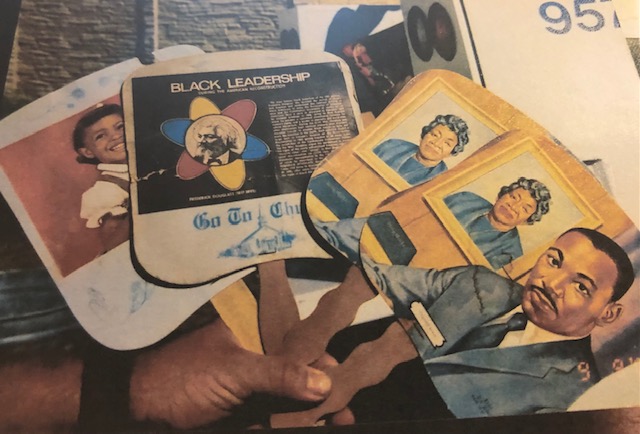
These fans from the 1950s and ’60s were found in the 1990s at an abandoned house in the Jones community. Fans were often passed out at church and at funerals.
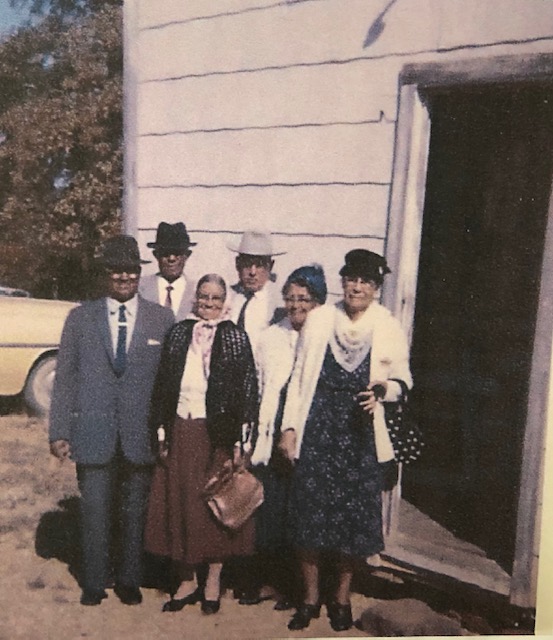
The church, according to grandson Bobby Jones, was a white wooden building about 25-by-40 feet in size. No steeple, no coat room no special ornamentation like a cross or stained glass. No pulpit, just a podium that the preacher stood behind and five benches on each side. A “circuit rider” preacher came once a month. Each summer there was a weeklong revival. Standing outside the doorway to the church are, left to right, McKinley Thomas; James Evans; Virgie Jones Evans; Emory Jones; Eugie Jones Thomas; and Mrs. Henley, Virgie’s sister-in-law.

The Jones family looked forward to “dinner on the grounds,” held at the church or, as in this picture (date unknown), in the yard of the homeplace. Everyone brought a favorite dish: fried chicken, chicken and dumplings, baked chicken, stewed chicken, macaroni and cheese, black-eyed peas, purple-hulled peas, cabbage, pinto beans, corn on the cob, mashed potatoes, cornbread and more. For dessert, sweet potato pie, peach and berry cobblers, and pound cake. Usually iced tea and lemonade to drink.

In 1960, grandson Bill (by door) visited Walnut Grove School. On the right, looking into the window, is his mother’s brother Plez Williams. The eight-grade school was closed in 1951 because its students were moving on to junior high (grades 7 and 8) and senior high (grades 9-12).
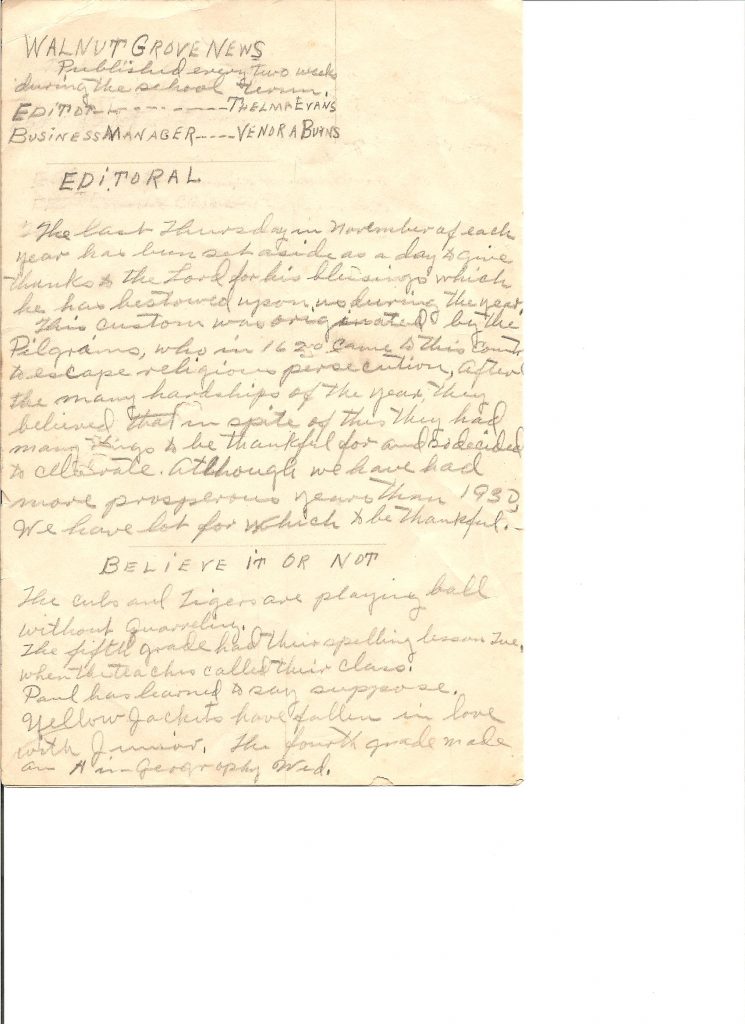

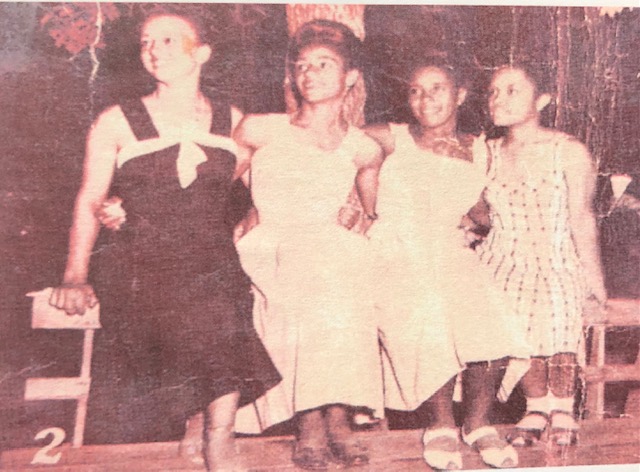
“I had a car and some white girlfriends, Norma and Wilma Barnett, who lived on Dove Road, across from the Torians. If we wanted a malt, we would all go into town together, and they would have me sitting in the middle of a booth at the City Drug store. Norma and Wilma would just glare at the people working there, just daring them to say something, but they never did,” Betty said, laughing. “Of course, the people working at the City Drug knew who I was, and they knew the Barnetts, too.”
“I handed out the boutonnieres and corsages at Wilma’s wedding,” Betty told a local historian. “Everyone knew me, but it was very strange.”
“I could do everything [that white people could do] but go to school and go to the movies — though I did go to the movies a few times,” Betty said. “I remember one summer when our neighbor Ivy would ask Mother if I could go to the movies with her and her daughter, Dorothy. Mama would say, ‘No, I don’t want her going and sitting in the balcony by herself.’ Ivy would say, ‘She isn’t going to sit in the balcony, she’s going to sit with us.’ This was the Palace Theater in Grapevine.”
(In 2021, the Palace Theater is still in operation on Main Street in Grapevine. A few blocks away is the old City Drug sign, although the store is no longer a drug store. City Drug is also where Betty would sometimes catch the Trailways bus to high school in Fort Worth. It went down Highway 121 — today we call it Highway 26.)
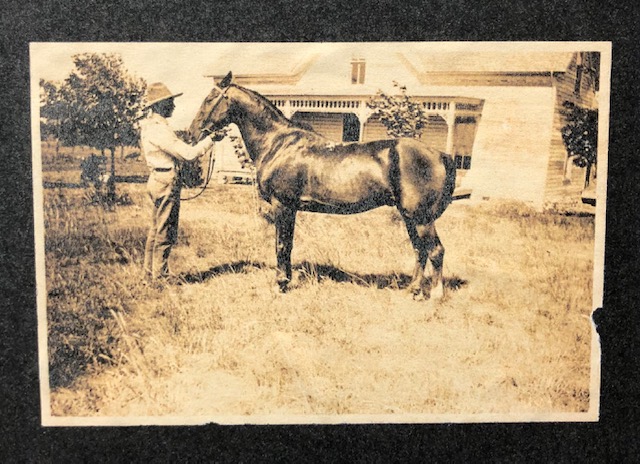
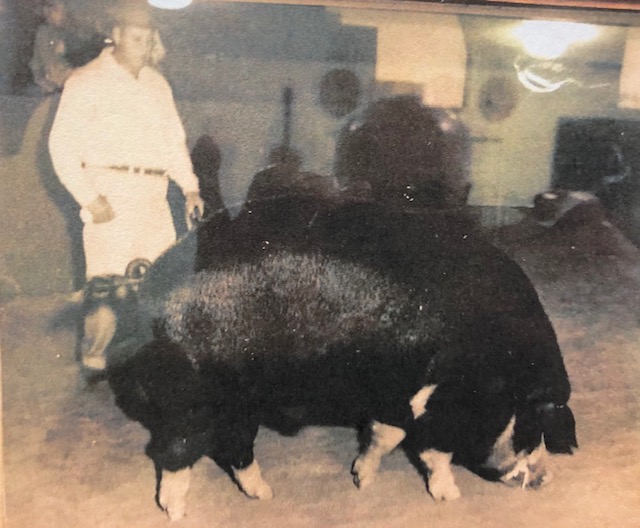
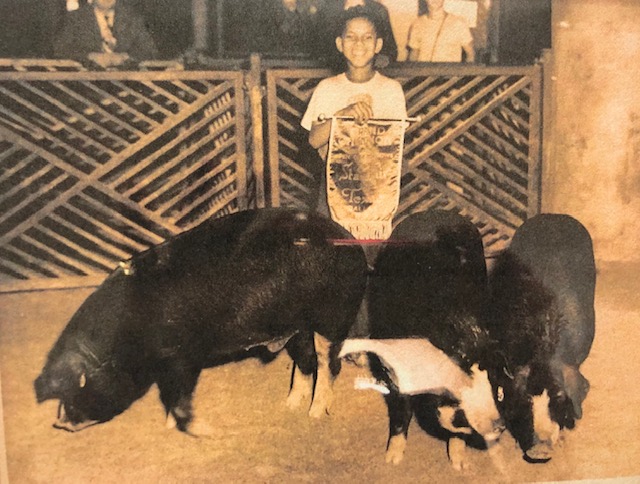
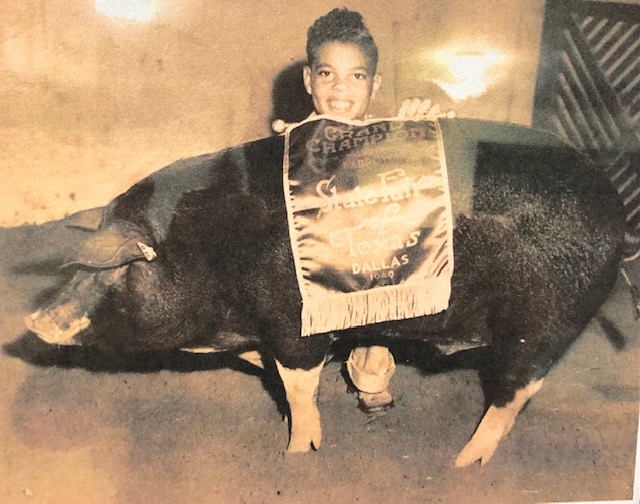


As soon as they were able, the Jones girls learned to sew. Later they became accomplished seamstresses, sewing their own clothing. As was the custom, they learned from their mother, who learned from hers.

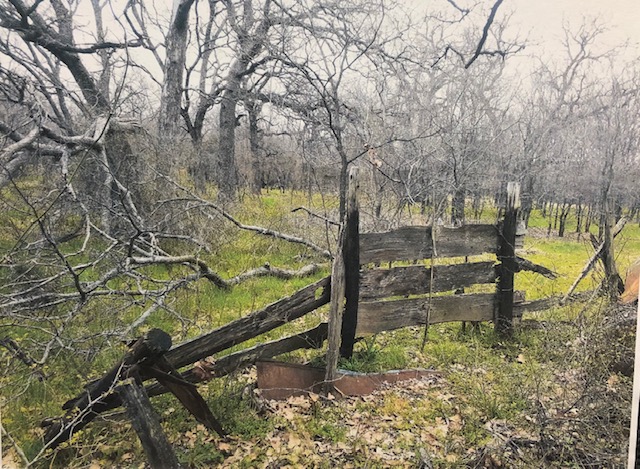

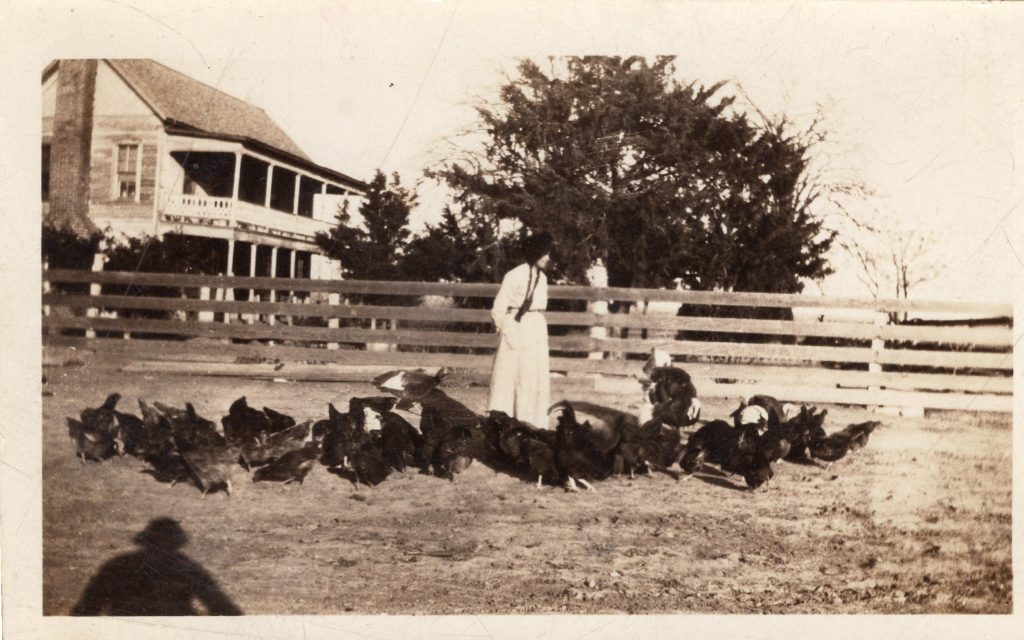
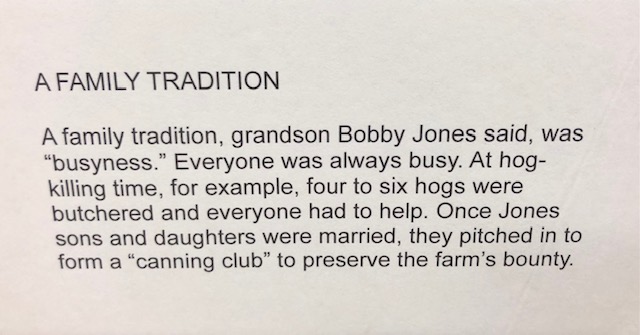
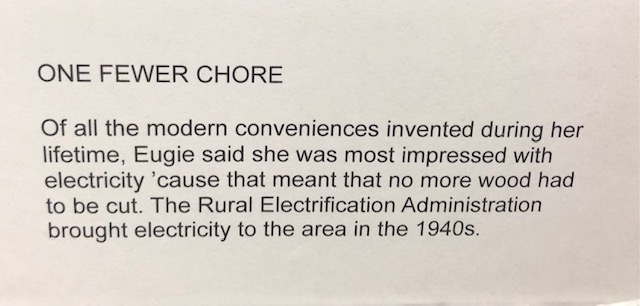

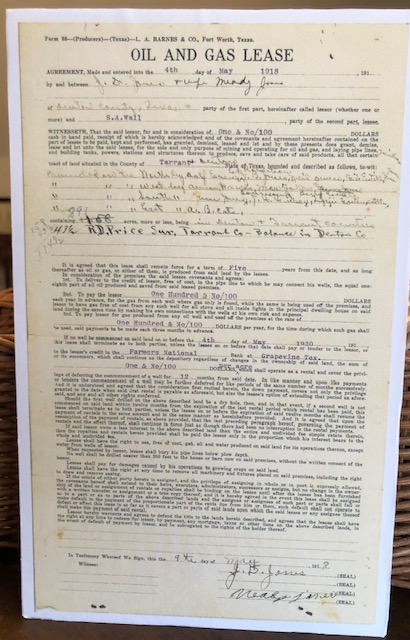
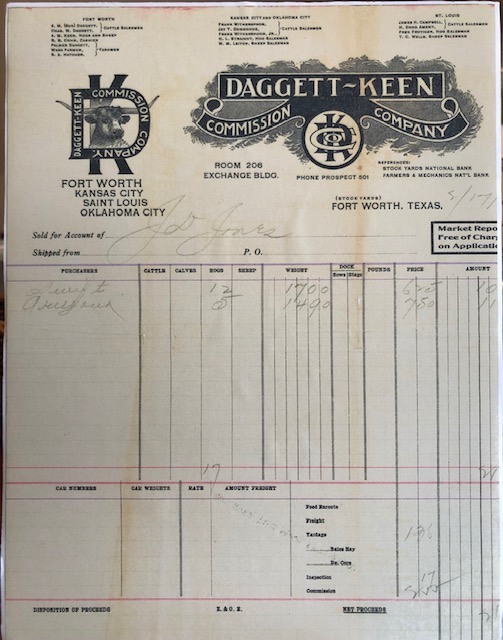
In the early 1930s, two of Bob’s grandsons, sons of Virgie and James Evans, lived with Mary and Will Lake, Bud Daggett’s daughter and son-in-law, while attending I.M. Terrell High School in Fort Worth. Tragically, LeRoy Evans drowned in a school outing at Lake Worth. The family suspected the school had been given rowboats that were poorly maintained.
The family was well known in livestock circles. “A room upstairs [at the Jones home] was always available as overnight accommodations to all white people who traveled by there,” remembers Ted Willhoite (1911-2003) of Grapevine. “My grandfather Charlie Winfrey [of Grapevine] told me that he traveled in that part of the country buying cattle and stayed at the Jones home.” On trips from Arkansas to see his daughter in Dallas, Bob’s half-brother Jink looked forward to also staying with he called his “Texas family.”
Jinks and Emory were proud to call John Chisum their grandfather. The cattle baron, writes the Texas State Historical Association, was personable and shrewd and primarily a cattle dealer who traveled in search of markets.

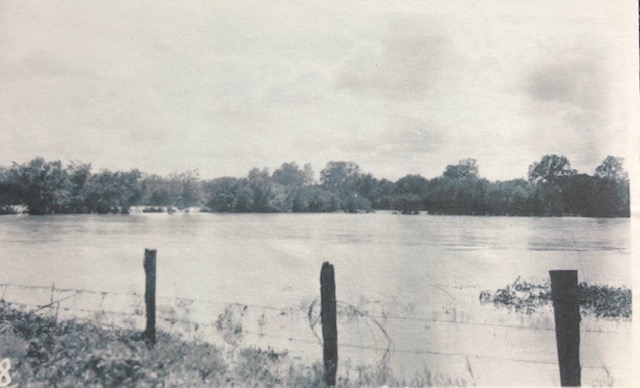

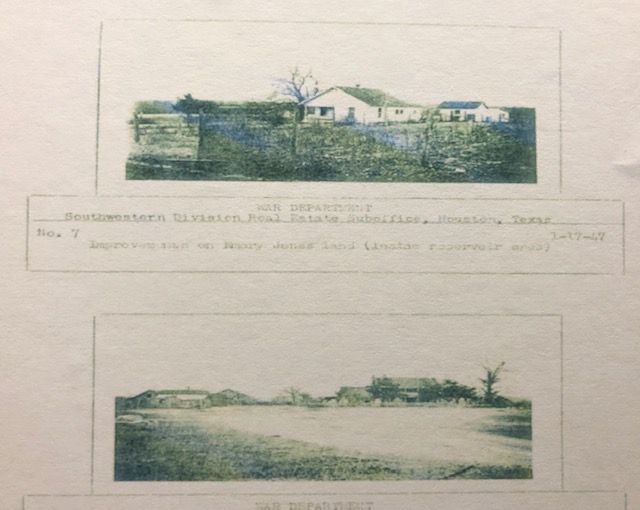



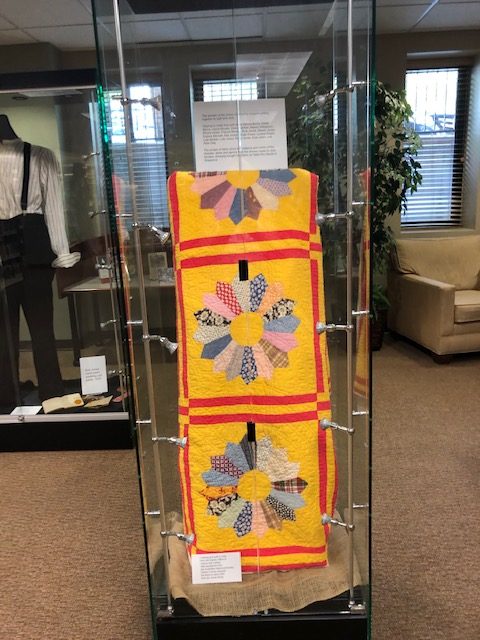
Helping to make this quilt were Venora Burns, Hattie Burns, Leona Revels, Viola Gardner, Meady Dillingham, Elnora Jones, Francis Revels, Bula Jones, Meady Jones, Eudora Stinnett, Ella Jones, Virgie Evans, Lorene Evans, Lola Woods, Lula Jones, Rosa Jones, Eula Jones and Artie Clay.
The scraps of fabric show the patterns and colors of the dresses, shirts and aprons that the women made for their families. Almeady purchased her fabrics at Yates Dry Goods in Grapevine.
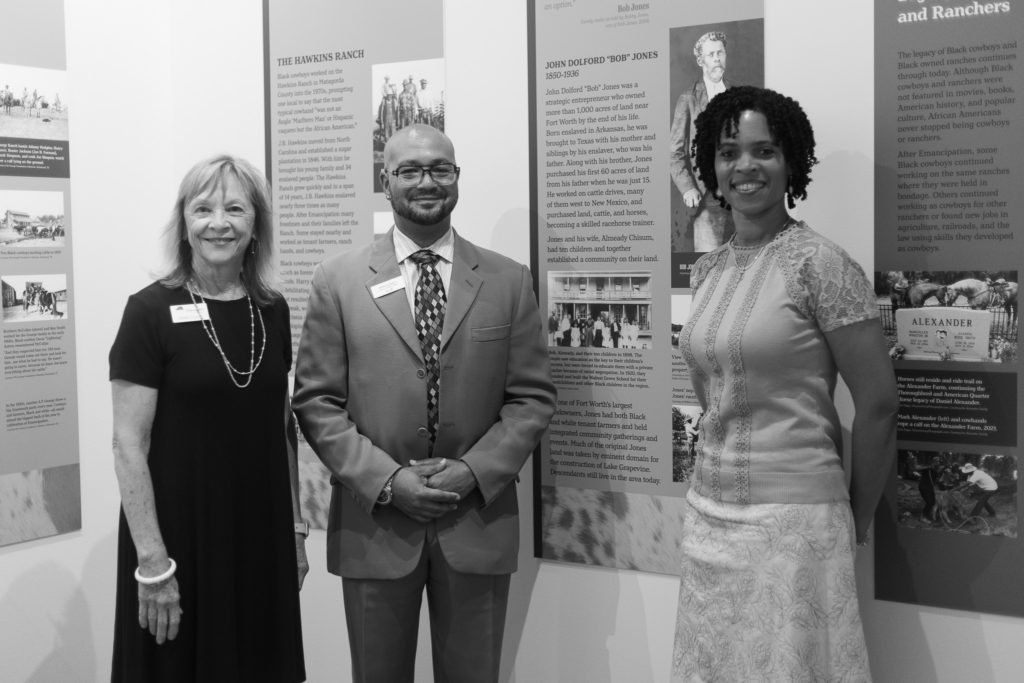
Southlake’s Bob Jones is now part of “Black Cowboys: An American Story.”
The exhibition at the Witte Museum in San Antonio transports visitors through time to meet Black cowboys and gain a greater appreciation of their deep impact on American history.
The exhibition ran June 15, 2024, through February 9, 2025 at the Robert J. and Helen C. Kleberg South Texas Heritage Center at the Witte Museum, 3801 Broadway, San Antonio, TX 78209 and continues as a Witte traveling exhibit.
The Witte is a Smithsonian affiliate.
